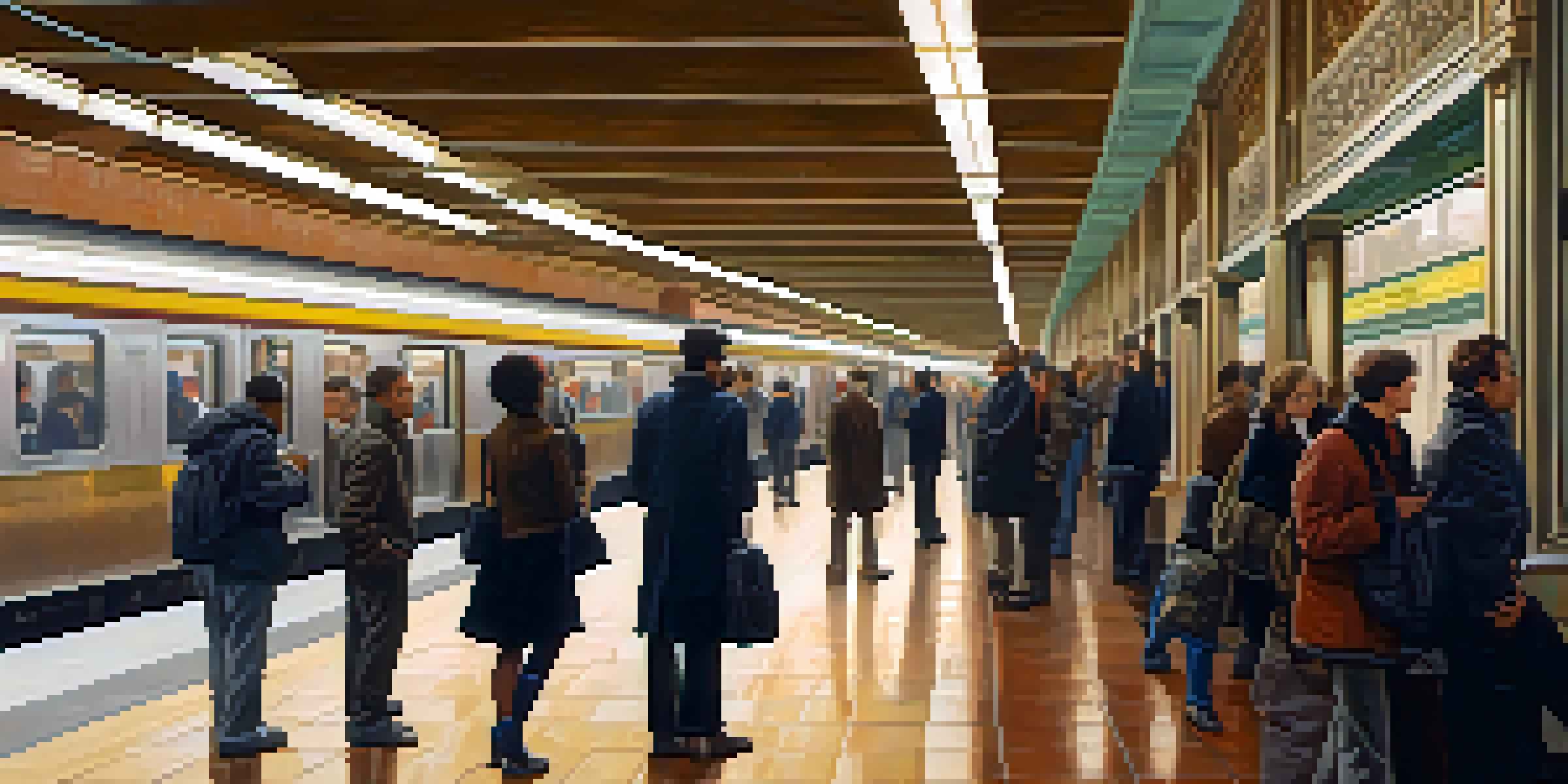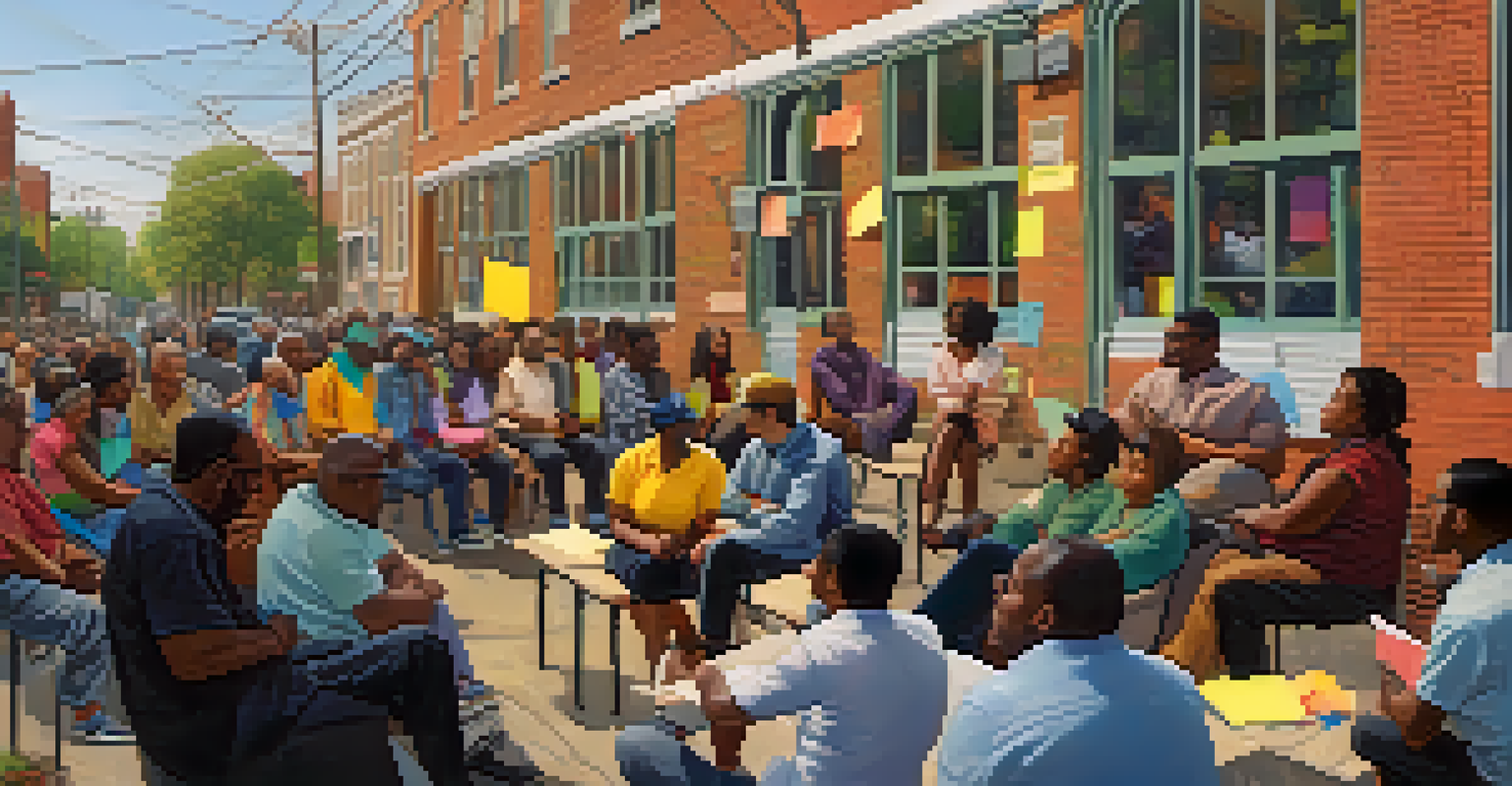Challenges Facing Philadelphia's Public Transportation Today

Outdated Infrastructure Complicates Transit Efficiency
Philadelphia's public transportation system is grappling with aging infrastructure. Many of the subway lines and buses are in dire need of upgrades, which can lead to delays and inconsistent service. This outdated infrastructure not only affects commuters but also discourages potential riders from using public transit.
Public transport is not just a service; it's a lifeline for many communities.
For example, the Broad Street Line, a major artery for the city, often experiences service interruptions due to maintenance issues. When trains break down or require repairs, it creates a ripple effect that impacts thousands of daily riders. Without significant investment in modernization, these inefficiencies will continue to plague the system.
Moreover, the lack of real-time updates and information for passengers can lead to frustration and confusion. In an era where technology offers instant communication, it's vital for transit authorities to provide accurate information to keep riders informed and engaged.
Funding Shortfalls Hinder Service Improvements
Public transportation in Philadelphia is often caught in a web of funding challenges. Budget constraints limit the ability to enhance services, such as increasing the frequency of buses and trains. This lack of funding results in longer wait times, making public transit less appealing to commuters.

The situation is compounded by rising operational costs, which make it difficult for the Philadelphia Regional Port Authority to balance its budget. With expenses outpacing revenue, critical projects and improvements are frequently put on hold. This ultimately affects the reliability and quality of service that riders expect.
Aging Infrastructure Affects Transit
Philadelphia's outdated public transportation infrastructure leads to delays and discourages ridership.
Additionally, the city’s reliance on state and federal funding can lead to uncertainty in long-term planning. When budget approvals fluctuate, it complicates the ability to implement necessary enhancements to the transit system.
Equity Issues: Access and Affordability Dilemmas
Equity in public transportation remains a significant concern in Philadelphia. Many neighborhoods, particularly low-income areas, lack sufficient access to reliable transit options. This disparity makes it challenging for residents to reach jobs, schools, and essential services.
Investing in public transportation is investing in the future of our cities.
Furthermore, the affordability of public transit fares can be a barrier for many. While some cities offer subsidized or free transit services for low-income residents, Philadelphia has yet to implement such measures widely. This leaves many individuals struggling to make ends meet while also trying to cover their transportation costs.
As a result, the city must prioritize creating equitable transit solutions that ensure all residents have access to affordable and reliable transportation options. Addressing these challenges is crucial for fostering community development and economic mobility.
Safety Concerns Affecting Rider Confidence
Safety is a top priority for public transportation systems, and Philadelphia is no exception. Recent reports of crime and harassment on transit vehicles have raised concerns among riders. This atmosphere of fear can deter people from using the system, ultimately impacting ridership numbers.
To combat these issues, transit authorities have increased security measures, such as deploying more police officers and installing surveillance cameras in stations. However, it’s essential to create a culture where passengers feel safe and supported while using public transport. Education and community engagement can play significant roles in promoting a safer environment.
Funding Issues Limit Improvements
Budget constraints and rising operational costs hinder the ability to enhance public transit services in Philadelphia.
Moreover, public perception of safety is vital; if riders believe that their safety is at risk, they are less likely to opt for public transit. Building trust and demonstrating a commitment to rider safety are critical steps in encouraging more Philadelphians to choose public transportation.
Environmental Impact of Transit Operations
As cities focus on sustainability, the environmental impact of public transportation is increasingly scrutinized. In Philadelphia, the reliance on older diesel buses poses significant environmental challenges, contributing to air pollution and greenhouse gas emissions. Transitioning to cleaner options, such as electric buses, is essential for reducing the transit system's carbon footprint.
However, the upfront costs associated with transitioning to more sustainable technologies can be daunting. Many transit authorities face challenges in securing the necessary funding for these initiatives. Without investment in greener solutions, the city risks falling behind in its sustainability goals.
Moreover, enhancing public transportation can significantly reduce the number of cars on the road, leading to less congestion and lower emissions overall. It’s a win-win scenario that not only benefits the environment but also improves the quality of life for residents.
Technology Integration: A Double-Edged Sword
Technology has the potential to revolutionize public transportation in Philadelphia, yet its integration can be complex. The use of mobile apps for real-time tracking and payment options can enhance the rider experience. However, not all residents have access to the necessary technology, which can create barriers for some riders.
For instance, older adults or those without smartphones may struggle to navigate these digital tools. This technological divide highlights the need for comprehensive training and support to ensure all riders can benefit from these advancements. It’s crucial to strike a balance between innovation and inclusivity.
Equity and Safety Concerns Persist
Many residents face access and affordability issues, while safety concerns deter others from using public transportation.
Additionally, while technology can streamline operations and improve service, it also requires continuous investment in infrastructure and training. The challenge lies in ensuring that technology enhances the public transit experience without alienating segments of the population.
Public Perception and Advocacy for Change
Public perception plays a pivotal role in shaping the future of Philadelphia's public transportation. Many residents view the system as unreliable, which can influence their transportation choices. Advocacy for improvements must focus on changing this narrative by showcasing the benefits of public transit.
Engaging the community through outreach programs can help raise awareness about the advantages of using public transportation. By highlighting success stories and fostering a sense of ownership among residents, it’s possible to shift attitudes and encourage more people to use the system.

Furthermore, collaboration with local organizations and stakeholders can amplify advocacy efforts. By working together, they can push for necessary changes and funding to enhance the public transportation experience for all Philadelphians.